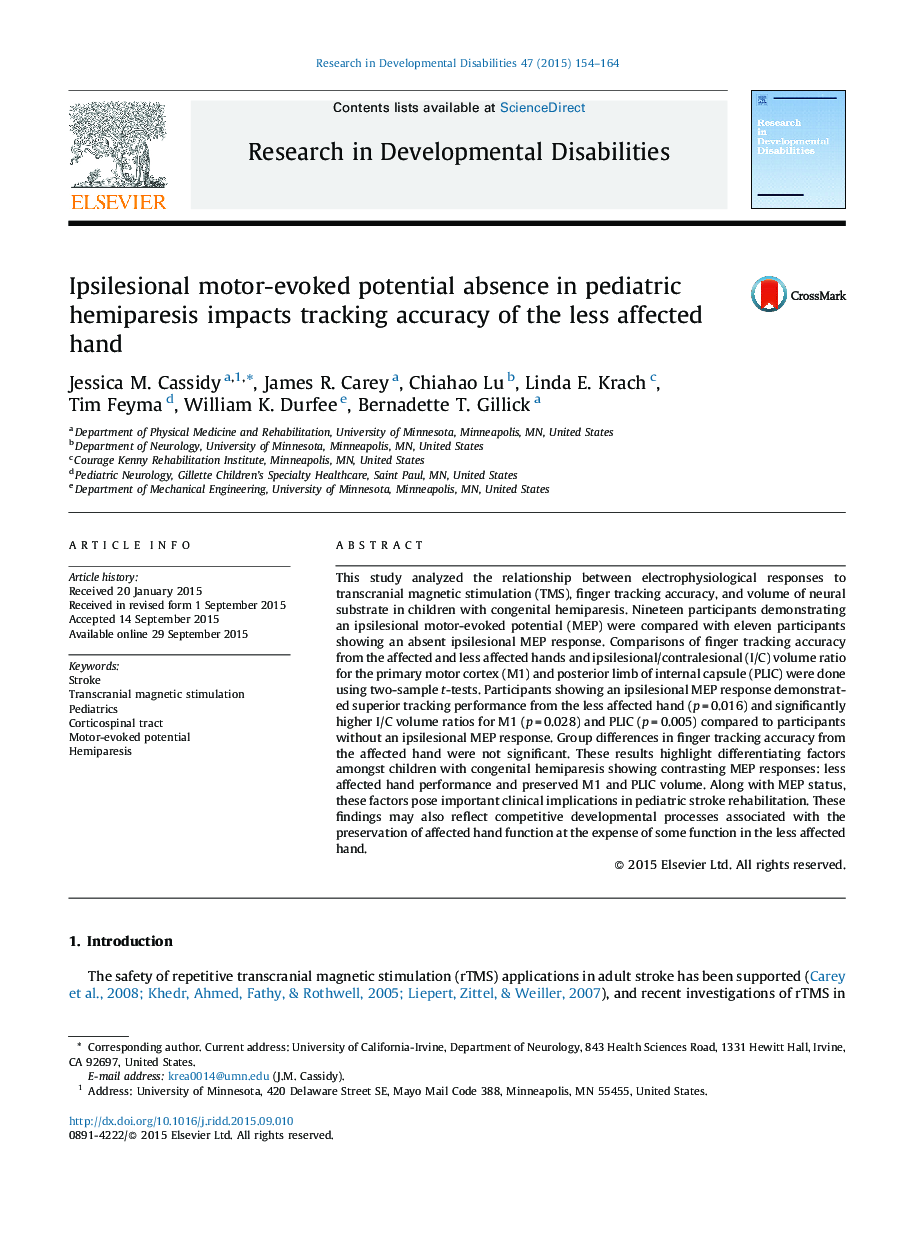| کد مقاله | کد نشریه | سال انتشار | مقاله انگلیسی | نسخه تمام متن |
|---|---|---|---|---|
| 371130 | 621898 | 2015 | 11 صفحه PDF | دانلود رایگان |
• Superior finger tracking in less affected hand seen in children with vs. without an ipsilesional motor-evoked potential (MEP) response.
• Finger tracking performance from the affected hand did not differ amongst children with vs. without an ipsilesional MEP response.
• Greater M1 and PLIC preservation found in children with an ipsilesional MEP response compared to those without.
• Finger tracking scores were not related to neural substrate preservation.
This study analyzed the relationship between electrophysiological responses to transcranial magnetic stimulation (TMS), finger tracking accuracy, and volume of neural substrate in children with congenital hemiparesis. Nineteen participants demonstrating an ipsilesional motor-evoked potential (MEP) were compared with eleven participants showing an absent ipsilesional MEP response. Comparisons of finger tracking accuracy from the affected and less affected hands and ipsilesional/contralesional (I/C) volume ratio for the primary motor cortex (M1) and posterior limb of internal capsule (PLIC) were done using two-sample t-tests. Participants showing an ipsilesional MEP response demonstrated superior tracking performance from the less affected hand (p = 0.016) and significantly higher I/C volume ratios for M1 (p = 0.028) and PLIC (p = 0.005) compared to participants without an ipsilesional MEP response. Group differences in finger tracking accuracy from the affected hand were not significant. These results highlight differentiating factors amongst children with congenital hemiparesis showing contrasting MEP responses: less affected hand performance and preserved M1 and PLIC volume. Along with MEP status, these factors pose important clinical implications in pediatric stroke rehabilitation. These findings may also reflect competitive developmental processes associated with the preservation of affected hand function at the expense of some function in the less affected hand.
Journal: Research in Developmental Disabilities - Volume 47, December 2015, Pages 154–164
